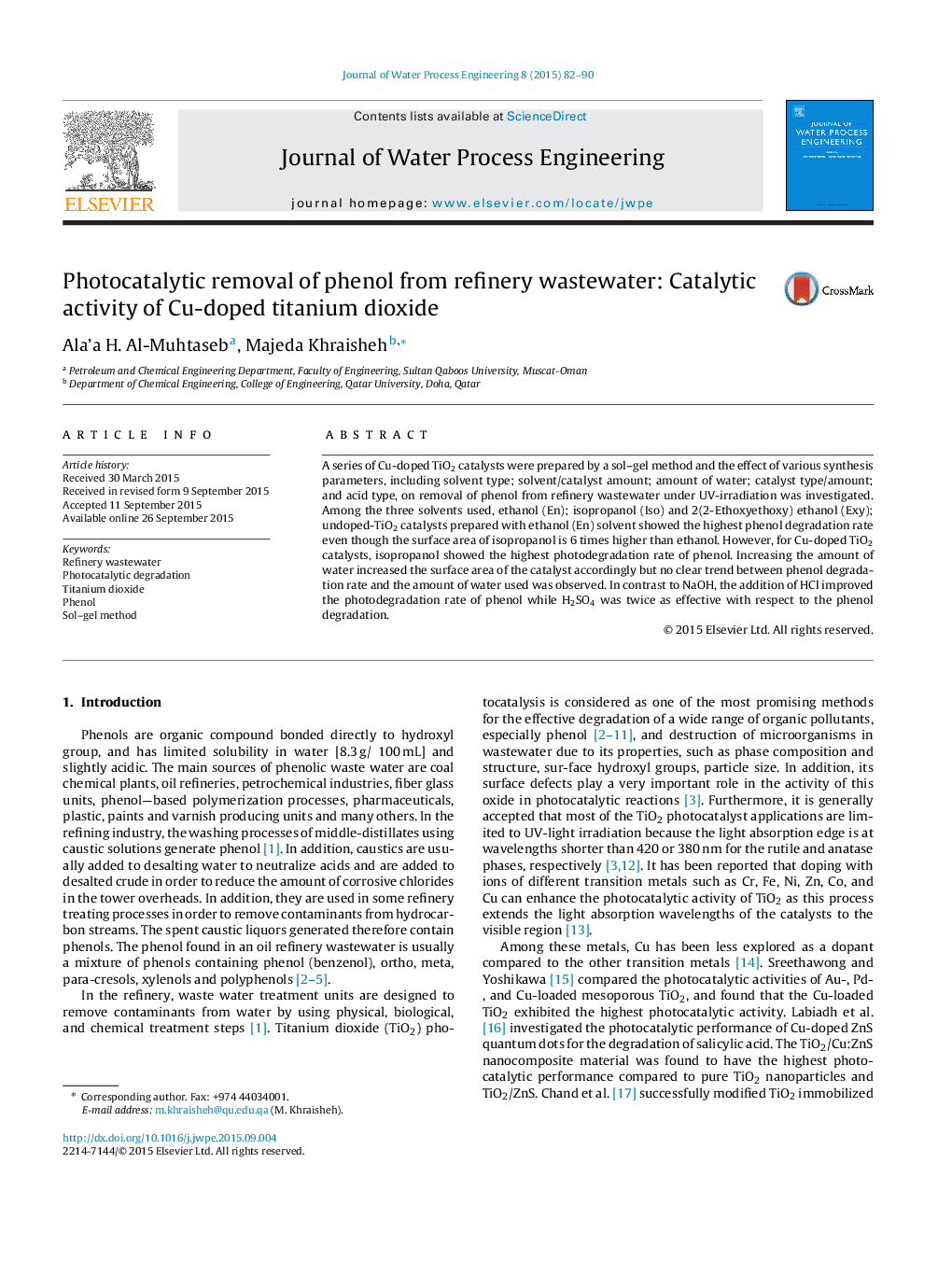| Article ID | Journal | Published Year | Pages | File Type |
|---|---|---|---|---|
| 232504 | Journal of Water Process Engineering | 2015 | 9 Pages |
A series of Cu-doped TiO2 catalysts were prepared by a sol–gel method and the effect of various synthesis parameters, including solvent type; solvent/catalyst amount; amount of water; catalyst type/amount; and acid type, on removal of phenol from refinery wastewater under UV-irradiation was investigated. Among the three solvents used, ethanol (En); isopropanol (Iso) and 2(2-Ethoxyethoxy) ethanol (Exy); undoped-TiO2 catalysts prepared with ethanol (En) solvent showed the highest phenol degradation rate even though the surface area of isopropanol is 6 times higher than ethanol. However, for Cu-doped TiO2 catalysts, isopropanol showed the highest photodegradation rate of phenol. Increasing the amount of water increased the surface area of the catalyst accordingly but no clear trend between phenol degradation rate and the amount of water used was observed. In contrast to NaOH, the addition of HCl improved the photodegradation rate of phenol while H2SO4 was twice as effective with respect to the phenol degradation.
